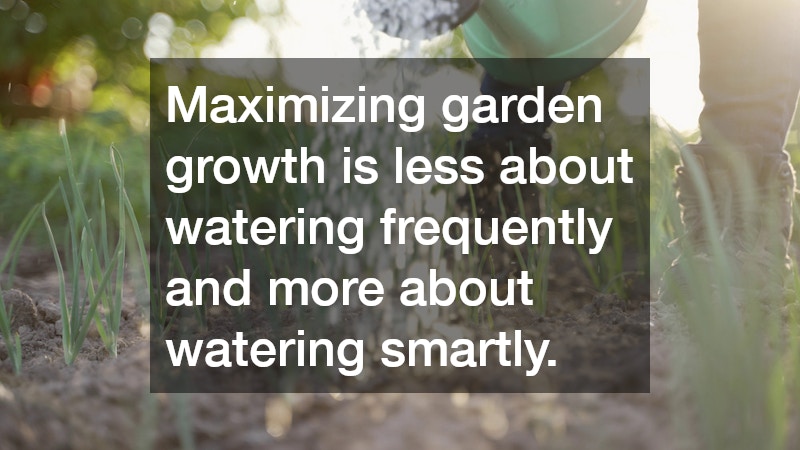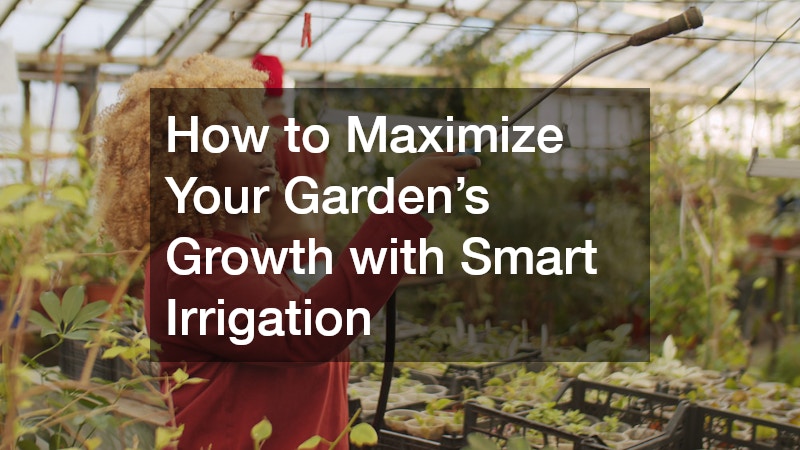A thriving garden doesn’t happen by chance. From choosing the right plants to providing proper care, every detail contributes to a flourishing outdoor space. Among the many strategies gardeners employ, efficient irrigation stands out as one of the most impactful. Proper watering ensures plants receive essential nutrients, helps prevent disease, and promotes stronger growth.
While traditional watering methods can be effective, modern approaches offer greater precision, flexibility, and sustainability. By understanding and implementing smart techniques, gardeners can unlock the full potential of their outdoor spaces and enjoy vibrant greenery throughout the season.
Understanding Your Garden’s Water Needs
Every garden is unique, with soil types, plant species, and sun exposure affecting how much water your plants require. Sandy soils drain quickly, meaning plants need more frequent watering, whereas clay soils retain moisture for longer periods. Similarly, some plants are drought-tolerant and thrive with minimal moisture, while others demand consistent hydration to grow optimally.
Observing your garden carefully is key. Look for signs like wilting leaves, yellowing foliage, or dry soil to determine whether plants are receiving adequate water. Keeping a simple watering journal can help track how different sections of your garden respond to moisture levels, rainfall, and temperature fluctuations. Over time, you’ll develop a clear understanding of the specific needs of each plant type.
Additionally, grouping plants with similar water requirements together can simplify your maintenance routine. This approach ensures no plant receives too little or too much water, which can stress them and slow growth. Understanding these factors is the foundation of smart watering and effective irrigation practices.
Investing in Modern Watering Systems
Traditional hose-and-sprinkler methods are convenient but often inefficient, leading to water waste through evaporation and runoff. Modern solutions offer a more targeted approach by delivering water directly to the root zone, where it is most effective. Drip systems, for example, release small amounts of water slowly, encouraging deep root growth and reducing surface evaporation. Soaker hoses distribute moisture evenly across garden beds without saturating the surface, helping prevent plant stress and soil erosion.
Automatic timers and sensors can enhance these systems further. Soil moisture sensors detect exactly how much water the garden needs, while weather-based timers adjust schedules depending on rainfall or temperature changes. These tools help ensure plants get the right amount of water at the right time.
For gardeners interested in sustainability, using collected rainwater or greywater with these systems provides an eco-friendly solution. Integrating modern watering technology into your irrigation setup can reduce waste, save money on water bills, and create healthier, more productive gardens.
Timing and Technique Matter
When you water your garden can be just as important as how you water it. Early morning is typically the best time, allowing water to soak into the soil before the heat of the day causes rapid evaporation. Evening watering is an alternative, but it may increase the risk of fungal diseases if foliage remains damp overnight.
Watering technique also affects plant health. Applying water slowly and deeply encourages roots to grow downward, producing stronger, drought-resistant plants. Avoid shallow, frequent watering, which results in weak surface roots and increases vulnerability to environmental stress.
Different plants may require different approaches. For example, vegetables and flowers benefit from targeted watering at the base, while lawns can tolerate broader coverage but need consistent soil moisture. Tools like watering cans, drip hoses, and gentle sprinkler heads help deliver water efficiently without displacing soil or washing away nutrients.
Maintaining Your System and Adapting as Needed
Even the most advanced watering systems require regular maintenance to function effectively. Inspect hoses, emitters, and timers for clogs, leaks, or wear, and clean filters as needed. Adjust the system seasonally to accommodate changes in weather, plant growth, and new garden additions.
Flexibility is key. Hot spells may require more frequent watering, while rainy periods allow for reduced water application. Observing how your plants respond and making small adjustments ensures optimal growth while minimizing waste. Over time, you’ll develop a system that perfectly matches your garden’s changing needs.
Education also plays a role. Learning about plant types, soil health, and local climate patterns allows gardeners to make informed decisions. Even small improvements, like mulching to retain soil moisture or installing rain barrels, can make a noticeable difference in overall garden health.
Maximizing garden growth is less about watering frequently and more about watering smartly. By understanding your plants’ needs, investing in modern delivery systems, timing your watering properly, and maintaining flexibility, you can create a thriving outdoor space that looks beautiful and conserves resources.
Thoughtful water management strengthens plants, reduces stress, and encourages deeper root growth, laying the foundation for long-term garden success. With careful planning and attention to detail, your garden can flourish season after season, proving that smart strategies—not just effort—make all the difference in cultivating a vibrant, healthy landscape.





